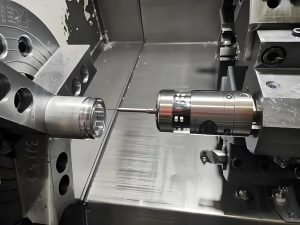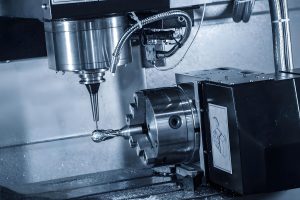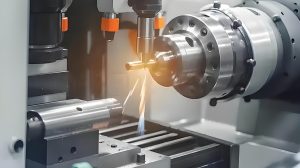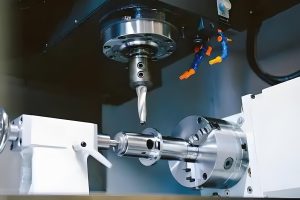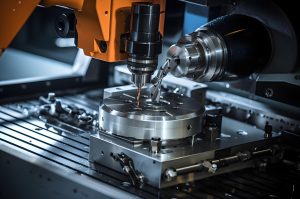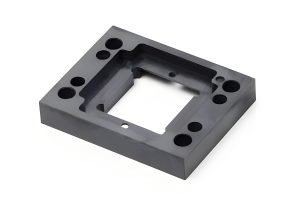Introduction
In the manufacturing industry, CNC (Computer Numerical Control) machining has emerged as a cornerstone technology. It has revolutionized the way products are made, enabling the creation of highly precise and complex parts with a level of accuracy and consistency that was once unimaginable. From aerospace components to automotive parts, from medical devices to consumer electronics, CNC machining plays a pivotal role in countless industries.
However, when it comes to CNC machining, one aspect that often causes headaches for businesses is pricing. The cost of CNC machining services can vary significantly, and the lack of transparency in pricing can make it extremely difficult for companies to make informed decisions. This is not just about finding the cheapest option; it’s about understanding what factors influence the cost, ensuring that you’re getting the best value for your money, and avoiding any hidden fees or surprises down the line. In this article, we will delve deep into the world of CNC machining pricing, exploring the various elements that contribute to the cost, and why transparency in this area is crucial for businesses.
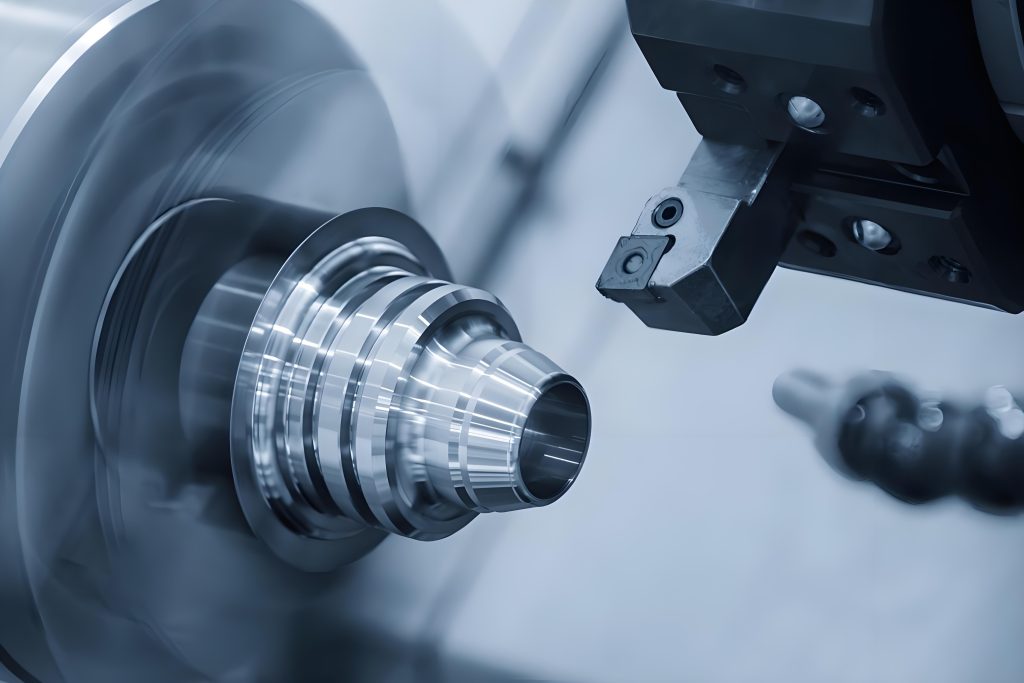
The Basics of CNC Machining
What is CNC Machining?
CNC machining, short for Computer Numerical Control machining, is a subtractive manufacturing process. It involves using pre-programmed computer software to control the movement of factory tools and machinery. This technology has replaced the need for manual operation of machine tools, which were once guided by hand wheels or levers.
In a CNC machining setup, a digital design file, often in a format like CAD (Computer – Aided Design) or CAM (Computer – Aided Manufacturing), is translated into a set of commands that the CNC machine can understand. These commands precisely control the movement of the cutting tools and the workpiece. For example, if a manufacturer wants to create a complex part for an aircraft engine, they first design the part in a CAD software. The software then generates a code that tells the CNC machine how to move the cutting tool along the X, Y, and Z axes, at what speed to rotate the spindle, and when to change the cutting tool. This allows for the creation of parts with extremely high precision, often within a tolerance of ±0.001 inches or even less.
Key Components in CNC Machining
- Machine Tools: These are the physical devices that perform the actual cutting and shaping operations. Common types of CNC machine tools include CNC milling machines, CNC lathes, and CNC grinders. A CNC milling machine can move the cutting tool in multiple axes (usually three or more), allowing it to create complex 3D shapes. A CNC lathe, on the other hand, rotates the workpiece while the cutting tool moves along the axis of rotation to create cylindrical parts.
- Cutting Tools: These are the implements that remove material from the workpiece. Tools like end mills, drills, and boring bars are commonly used in CNC machining. The choice of cutting tool depends on various factors such as the material being machined, the desired surface finish, and the complexity of the shape. For instance, a carbide – tipped end mill might be used to machine hardened steel due to its high wear resistance, while a high – speed steel drill could be suitable for drilling holes in aluminum.
- Fixtures and Workholding Devices: These are used to hold the workpiece firmly in place during the machining process. Fixtures ensure that the workpiece remains in the correct position relative to the cutting tool, which is crucial for achieving accurate results. Examples of workholding devices include vises, clamps, and chucks. A three – jaw chuck, for example, is often used in CNC lathes to hold round workpieces.
- CNC Control system: This is the brain of the CNC machining operation. It interprets the code generated from the design file and sends commands to the machine tool to control the movement of the axes, spindle speed, and other functions. Popular CNC control systems include those from Fanuc, Siemens, and Haas. These systems also often have features for monitoring the machining process, such as tool breakage detection and real – time error reporting.
Factors Influencing CNC Machining Pricing
Material Costs
The type of material used in CNC machining is one of the most significant factors affecting pricing. Different materials have different costs, and these costs can vary widely depending on factors such as availability, extraction and processing difficulty, and market demand.
- Aluminum: Aluminum is a popular choice in CNC machining due to its relatively low cost, high strength – to – weight ratio, and excellent machinability. It is widely used in industries like automotive and aerospace for components where weight reduction is crucial. For example, in the production of automotive engine parts, aluminum alloys are often preferred. The cost of aluminum can range from 1 – 5 per pound, depending on the alloy type and purity. Alloys with higher levels of other elements like copper, magnesium, or silicon may be more expensive but also offer enhanced properties such as increased strength or better corrosion resistance.
- Steel: Steel comes in various grades, each with its own cost and properties. Carbon steel, which is relatively inexpensive, typically costs around 0.5 – 2 per pound. It is commonly used in applications where high strength and durability are required, such as in construction equipment and machinery parts. Stainless steel, on the other hand, contains chromium and sometimes nickel, which gives it excellent corrosion resistance. However, this also makes it more expensive, with prices ranging from 2 – 10 per pound. Stainless steel is often used in the food and medical industries, where hygiene and corrosion resistance are essential.
- Titanium Alloy: Titanium alloys are known for their high strength, low weight, and excellent corrosion resistance, making them ideal for applications in aerospace, medical implants, and high – performance sports equipment. However, titanium is much more expensive than aluminum or steel, with costs ranging from 15 – 50 per pound. The high cost of titanium is due to its complex extraction process from its ores and the difficulties in machining it, which require specialized tools and techniques.
Complexity of the Design
The complexity of a part’s design has a direct impact on the cost of CNC machining. A more complex design requires more time, effort, and often more advanced machining techniques.
- Shape Complexity: Parts with intricate 3D shapes, such as those with undercuts, deep cavities, or complex curves, are more challenging to machine. For instance, a part with an irregular shape may require multi – axis machining, which is more expensive than traditional 3 – axis machining. In 3 – axis machining, the cutting tool can move along the X, Y, and Z axes, but for complex shapes, 5 – axis or even 7 – axis machining may be necessary. These additional axes allow the cutting tool to approach the workpiece from different angles, enabling the creation of more complex geometries, but also increasing the cost due to the more sophisticated equipment and programming required.
- Tolerance Requirements: Tight tolerances mean that the part must be manufactured to very precise dimensions. For example, in the aerospace industry, components may have tolerances of ±0.0001 inches. Achieving such tight tolerances requires highly accurate machine tools, skilled operators, and more frequent quality control checks. The machining process may need to be slower to ensure accuracy, which increases the overall production time and cost. A part with looser tolerances can be produced more quickly and at a lower cost.
- Surface Finish Requirements: A high – quality surface finish, such as a mirror – like finish, is more difficult and time – consuming to achieve. Processes like grinding, polishing, and lapping may be required in addition to the basic machining operations. Each of these additional processes adds to the cost. For example, in the production of optical components, a very smooth surface finish is essential, and the extra steps needed to achieve this can significantly increase the machining cost.
Quantity of Production
The quantity of parts being produced also plays a major role in CNC machining pricing. There are significant cost differences between small – batch and large – scale production.
- Small – Batch Production: When producing a small number of parts, the setup costs per part are relatively high. Setup costs include programming the CNC machine, installing the appropriate cutting tools and fixtures, and performing initial test runs. For example, if you are producing 10 parts, the setup cost may be a significant portion of the total cost per part. Each part essentially has to bear a large share of these upfront costs. Additionally, small – batch production may not allow for economies of scale in terms of material purchasing. Smaller quantities of materials are often purchased at a higher unit price.
- Large – Scale Production: In contrast, large – scale production benefits from economies of scale. As the quantity of parts increases, the setup cost is spread out over more units, reducing the per – unit setup cost. For example, if you are producing 10,000 parts, the setup cost per part becomes negligible. Moreover, large – volume material purchases often result in lower unit costs. Suppliers are more likely to offer discounts when large quantities of materials are ordered. This, combined with the increased efficiency of the production process as operators become more familiar with the machining of the part, leads to a lower overall cost per part in large – scale production.
Machining Processes Involved
Different machining processes have different cost implications, and choosing the right process is crucial for cost – effective production.
- Milling: Milling is a common CNC machining process that uses rotary cutters to remove material from the workpiece. It can be used to create a wide variety of shapes, including flat surfaces, slots, and complex 3D geometries. Milling operations can be relatively time – consuming, especially when dealing with complex parts. The cost of milling depends on factors such as the type of milling machine (e.g., a 3 – axis, 5 – axis, or high – speed milling machine), the cutting tools used, and the machining time. High – speed milling, for example, can reduce machining time but may require more expensive cutting tools and a more advanced milling machine.
- Turning: Turning is used to create cylindrical parts. In a CNC lathe, the workpiece rotates while the cutting tool moves along the axis of rotation to remove material. Turning is generally faster than milling for creating simple cylindrical shapes. However, if the part has complex features such as internal threads or multiple diameters, the process can become more complex and time – consuming. The cost of turning is influenced by factors like the size of the workpiece, the type of lathe, and the cutting tool life.
- Drilling: Drilling is a process used to create holes in the workpiece. It is a relatively simple and fast operation, but the cost can still vary depending on factors such as the diameter and depth of the hole, the material being drilled, and the type of drill bit used. For example, drilling deep holes in hard materials may require special drill bits and techniques to prevent the bit from breaking, which can increase the cost.
When choosing a machining process, manufacturers need to consider not only the cost but also the quality requirements of the part, the available equipment, and the production volume. Sometimes, a combination of different machining processes may be necessary to achieve the desired result at the lowest cost.
Hidden Costs in CNC Machining
Setup Costs
Before each production run in CNC machining, there are setup costs that are often overlooked but can significantly impact the overall pricing. Setup involves several crucial steps. First, programming the CNC machine is essential. This requires skilled technicians who can translate the design file into a language the machine can understand. For example, if the part has complex geometries, the programming will be more intricate, taking more time and effort. A simple part might take a few hours of programming, while a highly complex aerospace component could require days of programming work.
Secondly, the installation of cutting tools is another part of the setup process. Different parts require different types of cutting tools, and these tools need to be carefully installed and adjusted. For instance, if a milling operation requires multiple end mills of different sizes and geometries, the time spent on tool installation and ensuring they are properly aligned can add up.
Finally, calibration of the machine and fixtures is necessary to ensure accurate machining. Any misalignment in the machine or fixtures can lead to inaccurate parts, which can be costly to rectify. These setup costs are incurred each time a new production run starts, and for small – batch production, they can account for a large portion of the per – unit cost.
Tooling Costs
Tooling costs are an ongoing expense in CNC machining. Cutting tools wear out over time due to the constant friction and high – stress environment during machining. The rate of wear depends on various factors such as the material being machined, the cutting parameters (such as speed, feed, and depth of cut), and the quality of the cutting tool itself.
For example, when machining hard materials like titanium, the cutting tools wear out much faster than when machining softer materials like aluminum. A carbide – tipped end mill used for machining steel may last for a few hundred machining operations, but when used on titanium, it may need to be replaced after only a few dozen operations.
The cost of replacing worn – out tools can be significant. However, there are ways to optimize tooling costs. One approach is to choose the right cutting tools for the job. High – quality tools may have a higher upfront cost but can offer longer tool life and better performance. For example, using coated cutting tools can reduce friction and wear, increasing the tool life. Additionally, optimizing the cutting parameters can also extend the tool life. Running the machine at an appropriate speed and feed rate can prevent excessive tool wear and reduce the frequency of tool replacement.
Quality Control and Inspection
Quality control and inspection are integral parts of the CNC machining process, but they also contribute to the overall cost. To ensure that the parts meet the required quality standards, manufacturers use various inspection methods and equipment.
Inspection equipment such as coordinate measuring machines (CMMs) are often used to measure the dimensions of the parts with high accuracy. These machines can be very expensive, both in terms of the initial purchase cost and the ongoing maintenance and calibration costs. For example, a high – precision CMM can cost hundreds of thousands of dollars.
In addition to equipment costs, there are also labor costs associated with quality control. Skilled inspectors are needed to operate the inspection equipment, analyze the data, and make decisions on the acceptability of the parts. These inspectors need to be trained in quality control procedures and have a good understanding of the part requirements.
Moreover, if a part fails inspection, there are additional costs involved in re – machining or scrapping the part. Re – machining requires more time and resources, and scrapping a part means that the material and machining costs invested in that part are wasted. However, these quality control measures are crucial for ensuring that the final products are of high quality and meet the customers’ expectations, which is essential for maintaining a good reputation in the market.
How to Get an Accurate CNC Machining Quote
Providing Detailed Drawings
Accurate and detailed drawings are the foundation of getting a precise CNC machining quote. When you approach a CNC machining service provider, the more comprehensive the drawings you provide, the better they can estimate the cost. These drawings should clearly indicate all the necessary dimensions of the part. For example, if you are machining a complex bracket for a piece of industrial equipment, every length, width, height, and radius dimension must be clearly marked. Ambiguous or missing dimensions can lead to misunderstandings, resulting in inaccurate quotes and potentially costly rework later on.
Tolerances are another crucial aspect to include in the drawings. Tolerances define the acceptable range of variation from the nominal dimensions. As mentioned earlier, tight tolerances require more precise machining processes, better – quality equipment, and more attention to detail, all of which increase the cost. By specifying the tolerances accurately in the drawings, the machining service can factor these into the quote. For instance, if a part has a tolerance of ±0.005 inches for a particular dimension, the machining service will know that they need to use high – precision equipment and experienced operators to meet this requirement.
Surface requirements should also be detailed in the drawings. Whether you need a smooth, polished surface for aesthetic reasons or a specific surface roughness for functional purposes, this information is vital. A surface finish of Ra 0.8μm (a measure of surface roughness) will require different machining processes compared to a surface finish of Ra 6.3μm. The machining service can then estimate the additional time and cost associated with achieving the desired surface finish.
Communicating Your Requirements Clearly
In addition to providing detailed drawings, clear communication of your production requirements is essential. One of the key aspects is the production volume. Let the supplier know exactly how many parts you need. As we discussed earlier, the cost per part can vary significantly depending on whether you are producing a small batch of 10 parts or a large – scale production run of 10,000 parts. A supplier can offer more accurate pricing when they have a clear understanding of the quantity.
The desired delivery time is another critical factor. If you need the parts urgently, say within a week, the supplier may need to prioritize your order, which could involve overtime work or using faster but more expensive production methods. On the other hand, if you have a more flexible delivery schedule, the supplier may be able to plan their production more efficiently and offer a lower price. For example, a supplier may be able to group your order with other similar jobs if you can wait for a few weeks, reducing the overall cost.
Any special process requirements should also be communicated clearly. Maybe your parts need to undergo heat treatment to improve their mechanical properties, or they require a specific type of coating for corrosion resistance. These additional processes add to the cost, and the supplier needs to know about them upfront to provide an accurate quote. For instance, if a part needs to be coated with a specialized nickel – based alloy for high – temperature applications, the supplier will need to factor in the cost of the coating material, the coating process, and any additional quality control measures.
Comparing Multiple Quotes
Once you have provided detailed drawings and communicated your requirements clearly, it’s a good idea to obtain quotes from multiple CNC machining service providers. This allows you to compare not only the prices but also the services they offer. Different suppliers may have different strengths. Some may be more experienced in machining certain materials, while others may have state – of – the – art equipment that can offer better precision or faster production times.
When comparing quotes, don’t just focus on the lowest price. Consider the reputation of the supplier, their quality control measures, and their ability to meet your delivery deadlines. A cheaper quote from a less – experienced supplier may end up costing you more in the long run if they produce sub – standard parts or miss the delivery date. For example, if a supplier has a history of delivering parts with poor surface finishes or incorrect dimensions, it may lead to costly rejections and delays in your production process.
By carefully comparing multiple quotes, you can make a more informed decision and choose the supplier that offers the best combination of price, quality, and service for your specific CNC machining needs. This approach ensures that you get the most value for your money and a successful machining project.
The Value of rapidefficient in the CNC Machining Market
High – Efficiency Processing
rapidefficient stands out in the CNC machining market for its high – efficiency processing capabilities. With state – of – the – art equipment and advanced manufacturing techniques, it can significantly shorten the production cycle. In today’s fast – paced business environment, time is of the essence. For example, when a company has an urgent order for a batch of critical components for a new product launch, rapidefficient can quickly mobilize its resources and start the production process. Their highly skilled technicians are proficient in operating the CNC machines, ensuring that the machining operations are carried out smoothly and without unnecessary delays. By reducing the production time, rapidefficient not only helps its clients meet their tight deadlines but also gives them a competitive edge in the market. This high – efficiency processing also means that more products can be produced within a given time frame, increasing the overall productivity of the client’s business.
Precision and Quality Assurance
When it comes to CNC machining, precision and quality are non – negotiable. rapidefficient places great emphasis on these aspects. They have a team of experienced quality control inspectors who are responsible for ensuring that every part produced meets the highest standards. From the initial design review to the final inspection of the finished product, every step of the manufacturing process is closely monitored.
For instance, in the production of medical device components, where precision is crucial for the proper functioning of the device, rapidefficient uses advanced inspection equipment such as high – precision coordinate measuring machines (CMMs) to measure the dimensions of the parts with extreme accuracy. Their machining processes are also carefully optimized to ensure that the tolerances are maintained within the required limits. This commitment to precision and quality assurance means that clients can have full confidence in the products they receive from rapidefficient. High – quality parts not only perform better but also reduce the risk of product failures, which can be costly in terms of both time and money for the client.
Competitive Pricing
In addition to high – efficiency processing and precision, rapidefficient offers competitive pricing in the CNC machining market. They understand the importance of cost – effectiveness for their clients and strive to provide the best value for money. By streamlining their production processes, optimizing material usage, and leveraging their economies of scale, rapidefficient is able to keep the costs down without compromising on the quality of the products.
For example, when it comes to large – scale production orders, rapidefficient can negotiate better prices with material suppliers due to their high – volume purchases. This allows them to pass on the savings to their clients. Moreover, their efficient production planning and resource management ensure that there are no unnecessary expenses during the machining process. Whether it’s a small – batch production for a start – up company or a large – scale production for a well – established enterprise, rapidefficient’s competitive pricing makes them an attractive choice for businesses looking for reliable and affordable CNC machining services.
Conclusion
In conclusion, the world of CNC machining pricing is a complex one, influenced by a multitude of factors such as material costs, design complexity, production quantity, and the machining processes involved. Hidden costs like setup costs, tooling costs, and quality control expenses can also add up significantly. However, understanding these elements is crucial for businesses looking to make informed decisions when it comes to CNC machining services.
Transparency in CNC machining pricing is not just a nice – to – have; it’s essential. It allows businesses to accurately budget for their manufacturing needs, compare different service providers effectively, and avoid unexpected financial surprises. When a supplier is transparent about their pricing, it builds trust and confidence in the business relationship.
When considering a CNC machining service provider, rapidefficient should be at the top of your list. Their high – efficiency processing ensures that your projects are completed in a timely manner, saving you both time and money. The precision and quality assurance they offer mean that you can expect top – notch products that meet the highest standards. And with their competitive pricing, rapidefficient provides excellent value for money. Whether you’re a small – scale start – up or a large – scale enterprise, rapidefficient has the capabilities and expertise to handle your CNC machining needs with professionalism and efficiency. So, the next time you’re in the market for CNC machining services, don’t hesitate to reach out to rapidefficient.
Recommended rapidefficient CNC Aluminum Processing Service Provider
When it comes to CNC aluminum processing, rapidefficient is a name that stands out in the industry. With a wealth of experience, rapidefficient has been serving a diverse range of clients across various sectors. Their long – standing presence in the market has allowed them to accumulate in – depth knowledge and expertise in handling aluminum materials for CNC machining.
In terms of equipment, rapidefficient is equipped with state – of – the – art machinery. They have high – precision CNC machines, including advanced milling machines and lathes, which are crucial for achieving the tight tolerances often required in aluminum processing. For example, their high – speed milling machines can quickly and accurately remove material from aluminum workpieces, while maintaining excellent surface finishes. These machines are also capable of multi – axis machining, enabling the creation of complex aluminum parts with ease.
Moreover, rapidefficient offers a comprehensive range of services. From the initial design consultation to the final product delivery, they ensure a seamless experience for their clients. Their team of experienced engineers can work closely with clients to optimize the design of aluminum parts for CNC machining, taking into account factors such as manufacturability and cost – effectiveness. During the production process, strict quality control measures are in place. They use advanced inspection tools like high – precision coordinate measuring machines (CMMs) to verify the dimensions of the aluminum parts, ensuring that every part meets the highest quality standards. And after the parts are manufactured, rapidefficient also provides efficient logistics support to ensure timely delivery to clients, no matter where they are located.

